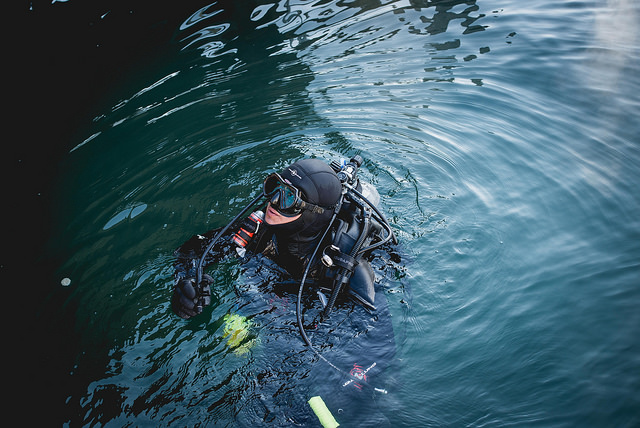How science is helping the police search for bodies in water
Dr Alastair Ruffell looks at how by combining technology with traditional methods such as diving, we are getting better at finding victims of homicide or accidental drowning.

Police divers have started searching a canal in North Lanarkshire, Scotland, hoping to find the remains of schoolgirl Moira Anderson who disappeared, suspected murdered, in 1957. The operation follows an investigation by my colleagues and me, identifying five areas of interest in the canal.
This kind of search is often challenging, as is the forensic recovery of a body. But by increasingly combining technology with traditional methods such as diving, we are getting better at it – greatly boosting our chances of discovering victims of homicide or accidental drowning. The techniques we use depends on the environment, ranging from ditches, canals and rivers to large lakes, estuaries and oceans.
I specialise in the first set of locations: bodies in small, enclosed spaces. These are common locations for bodies to end up in, due to their covert nature and ease of access without a boat.
Typically, the first step when searching for a missing person that is suspected to have ended up in water is to employ old-fashioned leads from police or search and rescue operations – such as points of access to the crime scene or the kind of distance the perpetrator and victim could have travelled. This may narrow down the search area.
Sonar, a technique that uses sound propagation to search for objects underwater, may then be used from a boat or held by a diver to image the pond or lake bed. If there’s a chance that the body could have sunk into soft sediment, a ground penetrating radar, which uses radar pulses to image the subsurface, could be placed at the base of a small boat to search for it.
If the sonar and/or radar detects an object, specially trained victim recovery dogs may be deployed from the boat to detect any scent rising from a decaying body.
In fact, we typically use a numbered system (one to four) of prioritising targets for dive teams to investigate. Four means high priority – with (theoretically) location, sonar, radar and dogs all indicating a possible sunken body. Three, two or one all mean that there are fewer indications than this. The end aim is to save dive teams from crawling along large areas of water conducting a fingertip search, or indeed draining the water body, with consequent environmental implications. The size and intensity of an anomaly on the radar data gives some clues as to what the target or contact may be, providing some important information for me to give the dive teams.
These techniques are extremely effective and apply to a large range of cases. For example, a few years ago we found a drowned victim in Fermanagh, Northern Ireland, using sonar, victim recovery dogs and penetrating radar. I am currently also assisting police with a number of searches for historic missing persons cases in some dams south of Belfast in Northern Ireland and in a canal in Scotland.
There are some well-known cases of victims of homicide found in water. Gary Ridgway, the Green River serial killer, for example, disposed of some of his victims in the Green River in Seattle.
Water also is involved in some of the most bizarre and gruesome murders of recent times. The body of Elisa Lam, a Canadian tourist, was found inside a Los Angeles hotel rooftop water tank (readers will be drinking bottled water in hotels from now on). In 2013, sewage workers found the dismembered parts of an unknown female in Bassett, Los Angeles.
There are also some unusual criminal investigations where water needs to be searched. In a recent search by environment agencies in Ireland for illegally dumped and buried waste, the perpetrator had flooded the quarry in which the toxic waste was hidden. He was hoping the presence of a few metres depth of water would hinder the search. But the deployment of the radar in a boat by Lorna Dawson and me allowed us to identify the waste, drain the quarry and successfully prosecute the offender.
Future technologies
Future technological advances in the search of water will include the increased use of underwater autonomous vehicles, or aqueous drones. These either roam on the water bottom or are propelled along the sediment surface, just as those used in submarine surveys of telecommunications cables, offshore windfarms and oil rigs.
Another modern approach is gas chromatography – a technique that can separate and analyse gaseous substances in water. Recent work has shown that it is possible to detect human decomposition products down to parts per billion. But exactly how practical it is remains to be seen – it has yet to be fully tested against dogs or other technology.
The main advance will be the further integration of all such techniques. A multi-proxy approach has a better statistical chance of success than using one method, as was often the case in the past. All areas of forensic science benefit from advances in technology. DNA analysis is a good example: the search for buried items and victims of homicide in water are no exception.
Hopefully this will help us to find the body of Moira Anderson. Had we all this technology back in the late 1950s, and had the location being searched now been known at the time, we might have already found her remains.
Article originally appeared in The Conversation.
The featured image has been used courtesy of a Creative Commons licence.




